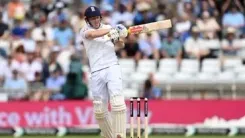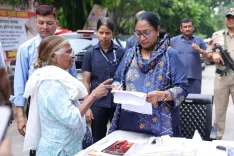How Crucial Will the First 30 Minutes Be for England?

Synopsis
Key Takeaways
- First half hour crucial for England's success.
- Ollie Pope leads with an unbeaten century, setting a solid foundation.
- Resilience shown after a tough first day with Tongue's four-wicket burst.
- Team's morale is high despite initial setbacks.
- Strategic adjustments made by Tongue helped him find his rhythm.
Leeds, June 22 (NationPress) England's fast bowler Josh Tongue emphasizes that the initial 30 minutes will be crucial for the home team to score additional runs and move closer to surpassing India on the upcoming day three of the inaugural Anderson-Tendulkar Trophy Test at Headingley this Sunday.
Ollie Pope’s unbeaten ninth Test century propelled England to 209/3 in 49 overs at the end of day two, leaving them trailing India by 262 runs. "The first half hour is essential; if we can navigate through that phase, we can hopefully add more runs to the board. It has been a challenging yet rewarding couple of days of cricket," remarked Tongue.
"We only took three wickets on the first day, but I believe everyone gave their best effort, and we were somewhat unfortunate. However, yesterday we responded well, securing four wickets in the first session and cleaning up the tail, so we are content with where we stand," Tongue shared during a conversation with Sky Sports.
When asked about the atmosphere in England’s dressing room after the first day, Tongue stated, “I felt that everyone had put in maximum effort. Though we were a little unlucky, we are satisfied with our current position.”
After a wicketless day one, Tongue made a strong comeback with a quick four-wicket haul to conclude India's first innings at 471 runs. He revealed that a message from skipper Ben Stokes helped calm his nerves and enabled him to find his rhythm.
"That initial spell was definitely nerve-wracking, but once I found my rhythm, I felt I created opportunities. Stokesy had a straightforward directive to hit the pitch hard, which was beneficial. The swing from around the wicket to the left-handers has been significant. Currently, it's more about swing than seam," he explained.
"I was simply trying to hit the pitch hard, which was the strategy. Once I noticed the ball swinging back in, especially with my first couple of deliveries to Pant, I started a bit too straight but then adjusted my line," he concluded.








